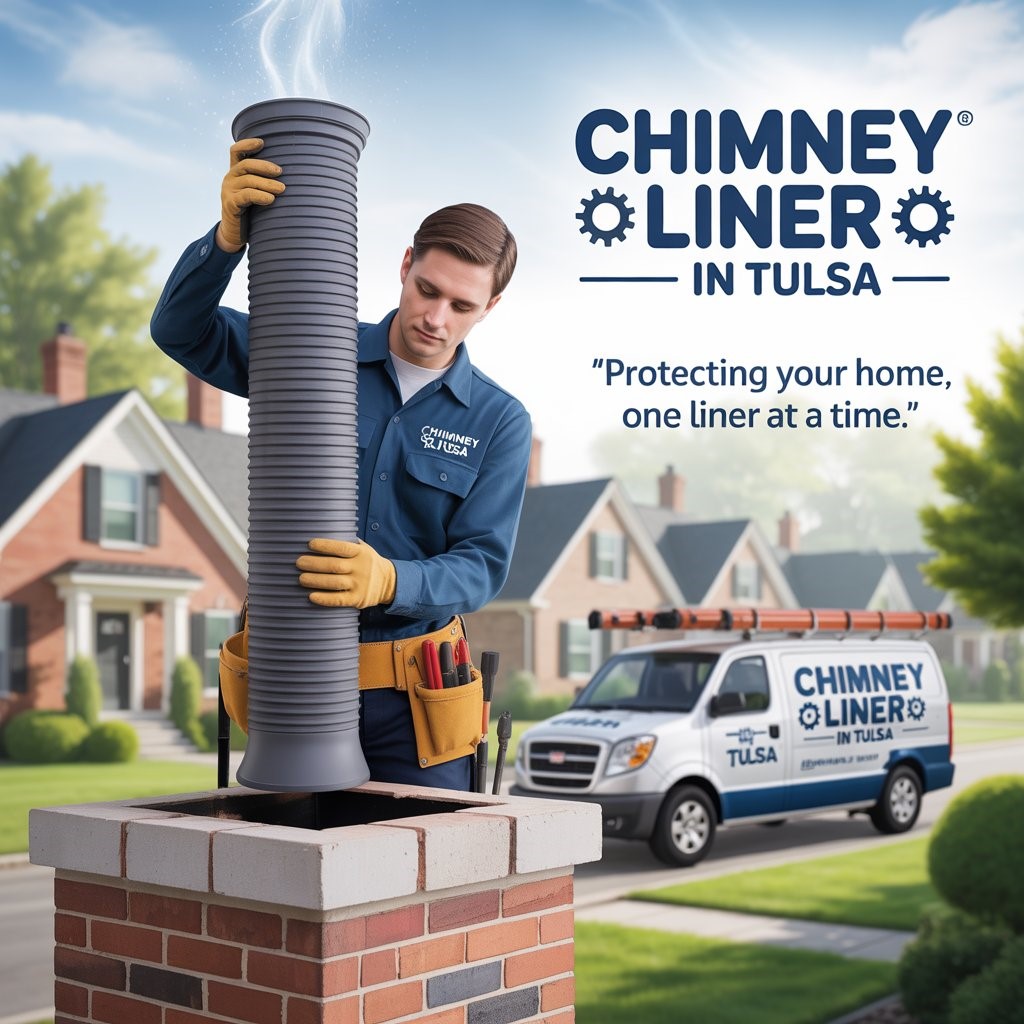If you live in Tulsa and have a fireplace or wood-burning stove that you use during the winter months, you probably know what chimney liners are. These hidden but vital parts play a big role in the safety and performance of your chimney system. But with the fluctuating humidity, temperature changes, and occasional storms in Tulsa, you might wonder: how long does a Chimney Liner really last in this type of climate? The duration varies based on a number of key factors, which we’ll explain below. So let’s get into how the weather, materials, upkeep, and cost all factor into your Chimney Liner‘s lifespan.
What Does a Chimney Liner Do Anyway?
Alright, first of all. A liner for a chimney is what lines the inside of your chimney. Its three functions are: to insulate the chimney walls from heat and corrosion, to improve the draft for smooth airflow, and to prevent from allowing toxic gases like carbon monoxide in. Under Tulsa weather conditions—hot, humid summers and cold winters—a liner gives the added protection against temperature degradation.
How Tulsa’s Weather Conditions Impact Liner Life
Tulsa is known for freeze-thaw cycles in winter and muggy summer humidity. This set of extreme temperature fluctuations can reduce the lifespan of your chimney system if not properly maintained. Water is a big enemy of chimneys. When water seeps into small cracks and then freezes, it expands and harms the structure. Over time, this affects not just the bricks and mortar, but also the interior chimney liner. Clay tile liners, common in older homes, will deteriorate with such conditions. Metal liners—most especially stainless steel—hold up in Tulsa weather, however, because they do not corrode and suffer from thermal stress.
Comparing Liner Types and Their Lifespan
Here’s a comparison of approximately how long every type of chimney liner will remain functional in Tulsa weather, under regular maintenance:
| Chimney Liner Type | Typical Lifespan | Weather Resistance | Maintenance Needs | Estimated Cost Range |
| Clay Tile | 15–25 years | Moderate | High | $2,000–$4,000 |
| Aluminum | 10–15 years | Low (not great for wood-burning) | Medium | $1,000–$2,000 |
| Stainless Steel | 20–30+ years | High | Low to Medium | $2,500–$5,000 |
| Cast-in-Place | 30–50 years | Excellent | Low | $4,000–$7,000 |
Disclaimer: These are rough estimates and may fluctuate with installer, house design, and use frequency.
Regular inspections can double the life of your liner—neglect can cut it in half,” says Mike Harwood, certified chimney technician with over 20 years of experience in the Midwest.
The Function of the Moisture and the Chimney Flue Liner
The chimney flue liner (better referred to as the chimney liner) also suffers a lot from moisture accumulation. Your chimney is constantly subjected to moist air due to Tulsa’s humid environment, and if water is penetrating the flashing or chimney cap, it will accumulate around the liner. The creosote and water mix together to form a very acidic product that wreaks havoc on the liner material. If your liner is made of metal and not so well insulated, condensation within may result, accelerating rust and reducing its lifespan. Frequent chimney sweeps and sealing from water intrusion are necessary.
Key Benefits of Maintaining or Replacing Your Liner
Allowing a chimney liner to deteriorate may not sound like a problem—until you think about the danger. Clogged liners can result in chimney fires, inadequate airflow, or even carbon monoxide leaks.
A healthy liner:
- Saves your home from chimney fires
- Boosts heating efficiency
- Hinders carbon monoxide exposure
- Minimizes expensive structural chimney repairs
When choosing to replace or repair your liner, always factor both cost and safety as long-term investments in the value of your home as well as your family’s health.
Safety and Cost Considerations
Liners are invisible, yet they instantly affect your home’s safety. A failed liner compromises your chimney’s purpose to expel smoke, which can cause flue blockages, backdrafting, or fire. In terms of reconstruction, delaying it is more expensive. A straightforward replacement with a stainless-steel liner would cost perhaps $3,000 today—but holding out until your chimney structure also requires reconstruction can cost up to $10,000 or more.
Frequently Asked Questions (FAQs)
Q: How often should I have my chimney liner inspected in Tulsa?
A: At least annually, especially before the winter burn season.
Q: Do I install a new liner myself?
A: No. It isn’t worth risking your life. Improper installation is dangerous and won’t meet fire codes.
Q: How do I know if I need to replace my liner?
A: Signs are visible cracks, fireplace flakes, poor draft, or house smokiness.
Q: What is the best liner for homes in Tulsa?
A: Stainless steel liners are popular because they can withstand ages and function nicely in changeable climates.
Q: Will an insurance policy cover damage to liners?
A: Only if caused by a covered cause like a chimney fire—everyday wear and tear usually isn’t included.
Important Features of a Quality Chimney Liner
When choosing a liner or reviewing one already installed, look for the following characteristics:
Corrosion resistance: especially important in humid climates such as Tulsa
Proper insulation: to prevent condensation
Heat resistance: important for wood-burning fireplaces
Certifications: UL-listed liners are safety certified
Warranty: most quality liners come with 10+ year warranties
Conclusion
In Tulsa’s evolving climate, a chimney liner is no longer an option—it’s a required part of keeping your fireplace safe, efficient, and long-lasting. No matter if your house uses wood, gas, or pellet heat, staying in front of chimney liner inspections can avoid costly repairs and even hazardous situations. With the proper materials, proper installation, and routine servicing, your liner should last decades—even Tulsa’s most sweltering summers and frigid winters. So if it has been a little while since your chimney was last inspected, perhaps now is the time to show your Chimney Liner some love.
Read More: Chimney Sweep
